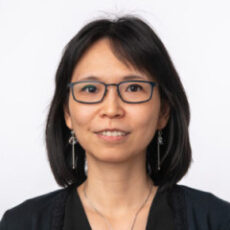Tradition in Felicities
Dr. Tzu-I ChungFormer Curator of History
Why did you want to become a historian?
History has always intrigued me – I’ve wondered how people lived and acted, how the past informs the present, what utensils people used and what clothes people wore (and how it felt to wear those clothes). I’ve been especially interested in what people in the past thought and assumed (what they unconsciously accepted as normal, like social class, gender roles and perceptions of nature) about their lives and times.
How did you become a curator?
During and after my doctoral studies, my years teaching in American universities strengthened my belief in the importance of diversity and historical education, and my commitment to public outreach. My position as a curator at the Royal BC Museum is a remarkable opportunity to work with scholars and professionals in public outreach, educational programming and exhibits.
What does a curator do?
To curate means to care for. My job involves caring for, developing, displaying, studying and sharing our museum’s history collections and our province’s history. My work can be divided into three major areas: research, collection development and interpretation, and outreach.
I conduct research on the artifacts in our history collections to find out the stories behind them, and how these stories connect to our provincial, national and global history. I also evaluate donations to the Royal BC Museum’s history collection and make short-term and long-term plans and arrangements to acquire new items. And, to provide content and context for major exhibits, I select artifacts and write their stories.
My outreach activities include writing articles, giving lectures and doing tours for various groups, in order to share information about BC’s history and cultural diversity, our collections and our exhibits. I also respond to inquiries from the public and participate in conferences and community and scholarly projects.


